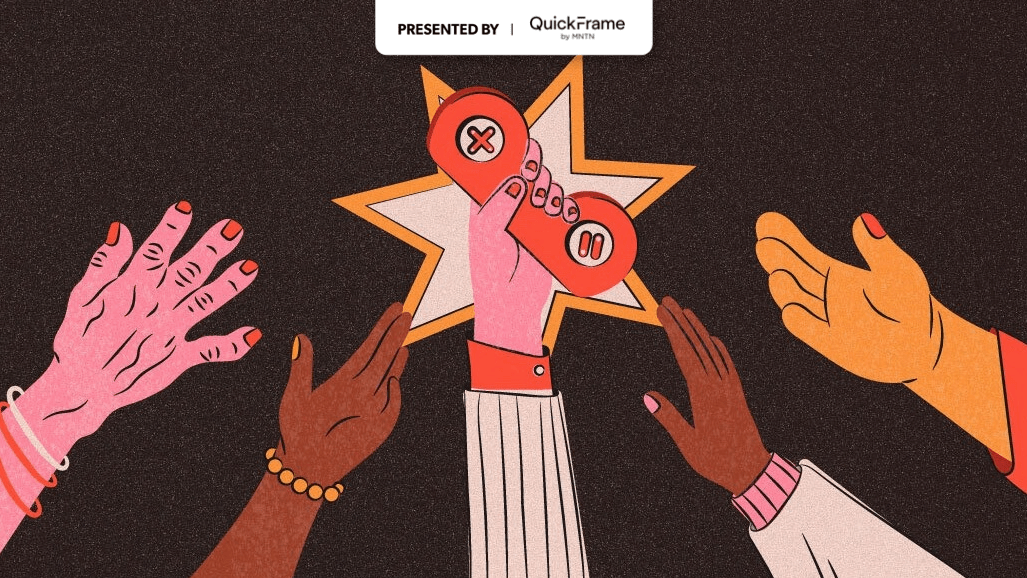Why State Farm used influencer marketing to attract Gen Zers to its video game competition

State Farm (yes, the insurance brand) worked with creators to generate buzz around its video game competition in June to reach millennials and Gen Z gamers.
State Farm created Gamerhood, a game series that pits users against each other, in 2022. To invest in that offering this year, the brand hired big gaming streamers including Tyler “Ninja” Blevins and his wife, Jessica Blevins, as well as Ludwig (Ludwig Anders Ahgren), Typical Gamer (Andre Rebelo), and Krystalogy (Krysta Eason) to compete in Gamerhood and promote it on their own Twitch streams.
Other brands that have invested in gaming include Netflix and Dentsu as a growing channel for marketers to reach the Gen Z audience. Like Slim Jim’s Discord channel, State Farm wants to make its gaming competition series more accessible to younger people who may not be familiar with it.
The interactive component of the show gave viewers a chance to win prizes, including gift cards worth up to $500, while playing at home via Twitch and TikTok. Every episode featured a winner selected at home.
“Rather than simply taking TV adverts and putting them on social, the brand [State Farm] prioritized a more strategic approach, meeting users in native environments with bespoke content,” said Charlotte Scorer, head of paid social at DEPT UK, a technology and marketing firm.
The brand used social media platforms TikTok and Twitch to engage with the gaming community organically. For TikTok, the goal is to leverage its own mascot — Jake from State Farm — to build up hype and interest days before with behind the scenes content, and during the competition to keep its followers engaged. In addition, State Farm’s in-game ad spots during the live streams also featured Jake encouraging its viewers to scan the QR code on the screen that leads to its TikTok page.
“Gamerhood 2 leveraged a pretty robust and holistic content mix that was true to who each of the content creators were that gave them liberty and license to talk about the things that were interesting to them and that they wanted to share with our audience,” said State Farm’s vp of marketing Alyson Griffin, without divulging how much the brand is paying the creators.
Griffin looked for feedback across channels and monitored comments posted, the time of day viewers joined the game and their interest in prizes.
Having just completed its second year, Gamerhood doubled growth in episode viewership with over 10 million views across YouTube and Twitch, which is an increase of 116% over its first year, which had a total of 4.4 million viewers, according to internal stats.
“State Farm’s marketing approach, engaging Gen Z through gaming, exemplifies a core principle of omnichannel marketing — meeting the audience where they are,” said Chris Costello, senior director of marketing research at Skai. “Understanding the touchpoints of your audience is one of the fundamental principles of the emerging discipline of omnichannel marketing.”
According to Griffin, the marketing budget is divided into three categories: current demand, future demand, and current customers. To increase awareness of its gaming competition, it uses a variety of paid media channels, including influencers, pure media buys, digital content, and social media platforms.
With that said, it is unclear how much State Farm spent on this effort, as the brand declined to share exact figures. According to Vivvix, including paid social data from Pathmatics, the brand spent a little over $460 million on advertising so far in 2023, down from $1.1 billion in 2022. In addition to recent advertising on broadcast, digital, podcasts and other channels covering the Women’s World Cup, Griffin said the brand will continue to allocate its marketing dollars to live sports this fall, much as it has for several years. Amidst this ongoing strikes in the industry, brands are focusing on live sports as a way to market their products.
More in Marketing

As the line between B2B and B2C marketing blurs, Workday taps humor in consumer-facing media channels
As the crowded digital landscape challenges marketers to stand out, B2B company Workday tests a B2C marketing strategy.

How the NBA’s broadcast rights tussle could affect advertisers
Streaming could change the NBA advertising landscape, say media experts.

Ad tech vendor Colossus faces scrutiny for alleged mismanaging IDs
Concerns stem from a report by ad transparency startup Adalytics, which discovered that Colossus was mislabeling IDs, leading to unintended ad purchases.








